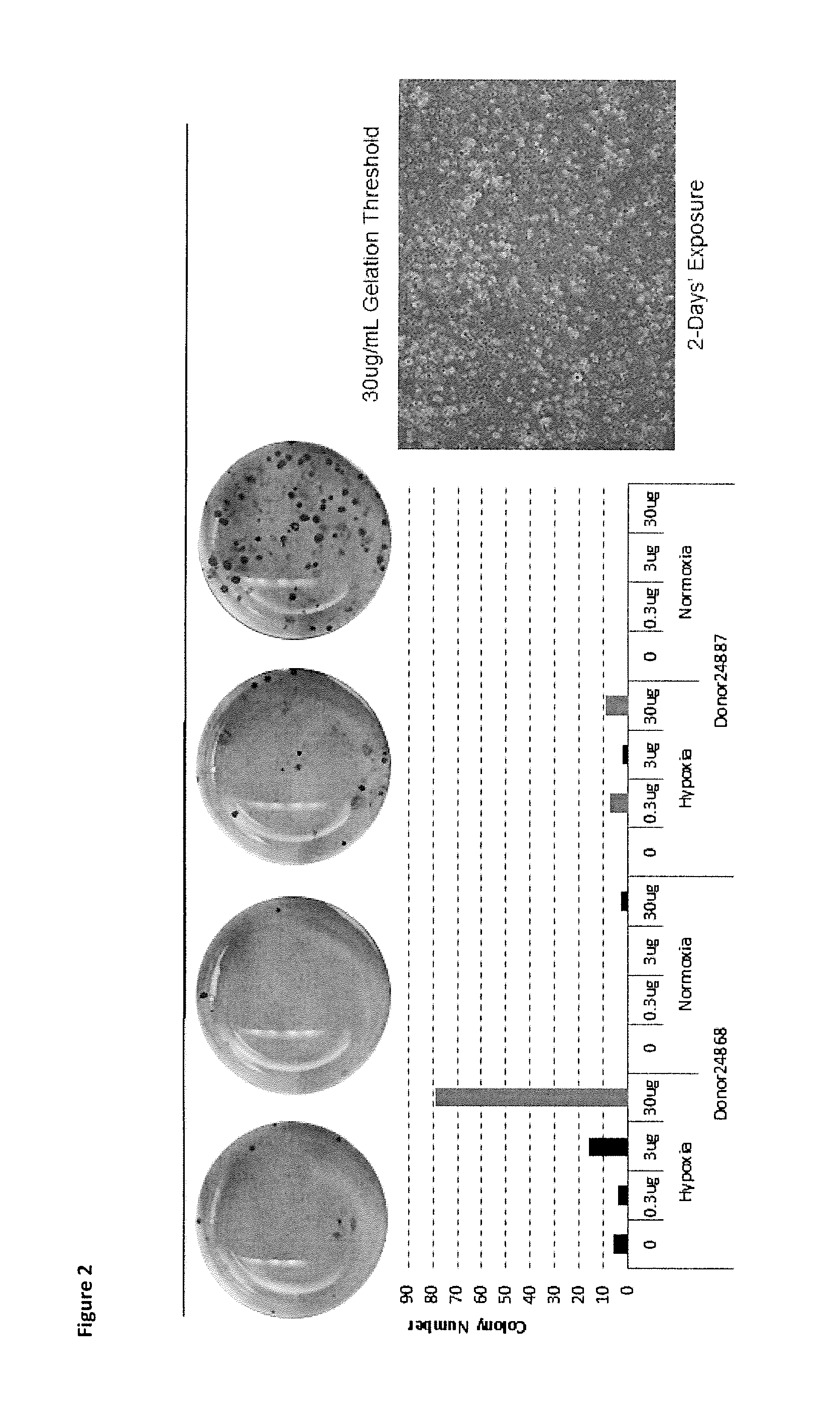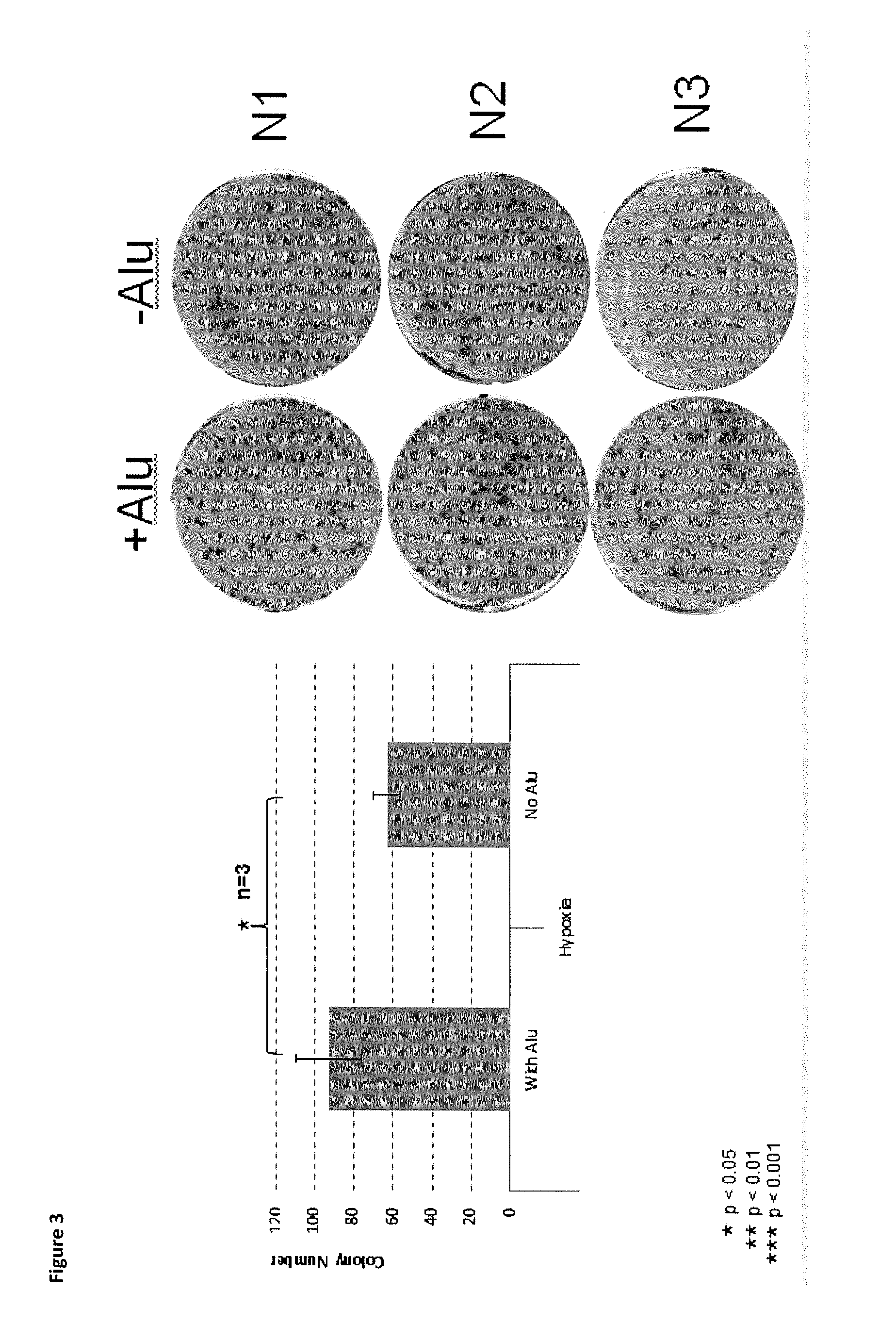Methods for nuclear reprogramming of cells
a cell and nuclear technology, applied in the field of stem cell reprogramming methods, can solve the problems of reducing reprogramming efficiency, affecting and much remains to be understood about the underlying cause, so as to achieve the effect of modulating cell and/or tissue phenotyp
- Summary
- Abstract
- Description
- Claims
- Application Information
AI Technical Summary
Benefits of technology
Problems solved by technology
Method used
Image
Examples
example
[0076]Reprogramming of human cord blood CD34+ cells or peripheral blood mononuclear cells with episomal plasmids and aluminum hydroxide under feeder free conditions.
[0077]This procedure generates human induced pluripotent stem cells (iPSCs) by reprogramming human cord blood CD34+ cells or PBMCs using episomal plasmids, Lonza 4D-Nucleofector™ system, Lonza #7 PSC medium and a human vitronectin matrix.
[0078]Materials used include: Human cord blood CD34+ cells (Lonza, Cat. No. 2C-101) or Human peripheral blood mononuclear cells (Lonza, Cat. No. CC-2702); Blood Cell Medium containing serum free basal medium, 50% IMDM (Invitrogen Cat No. 12440-053), 50% Ham's F12 (Invitrogen cat No. 11765054), 1× Chemically defined lipid concentration (Invitrogen Cat No. 11905-031), 1× Insulin-Transferrin-Selenium-X (ITS-X) (Invitrogen Cat No. 51500), 50 ug / mL Ascorbic acid (Sigma-Aldrich Cat No. 49752), 5 mg / mL Bovine Albumin Fraction V solution (Invitrogen Cat No. 15260-037), 2 mM GlutaMax™-I (Invitrog...
PUM
| Property | Measurement | Unit |
|---|---|---|
| concentration | aaaaa | aaaaa |
| temperatures | aaaaa | aaaaa |
| time | aaaaa | aaaaa |
Abstract
Description
Claims
Application Information
 Login to View More
Login to View More - R&D
- Intellectual Property
- Life Sciences
- Materials
- Tech Scout
- Unparalleled Data Quality
- Higher Quality Content
- 60% Fewer Hallucinations
Browse by: Latest US Patents, China's latest patents, Technical Efficacy Thesaurus, Application Domain, Technology Topic, Popular Technical Reports.
© 2025 PatSnap. All rights reserved.Legal|Privacy policy|Modern Slavery Act Transparency Statement|Sitemap|About US| Contact US: help@patsnap.com



